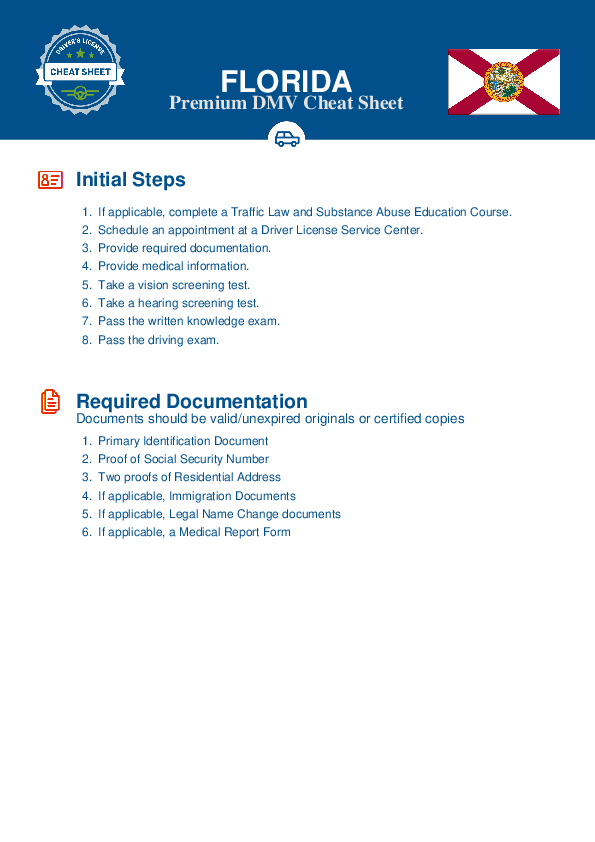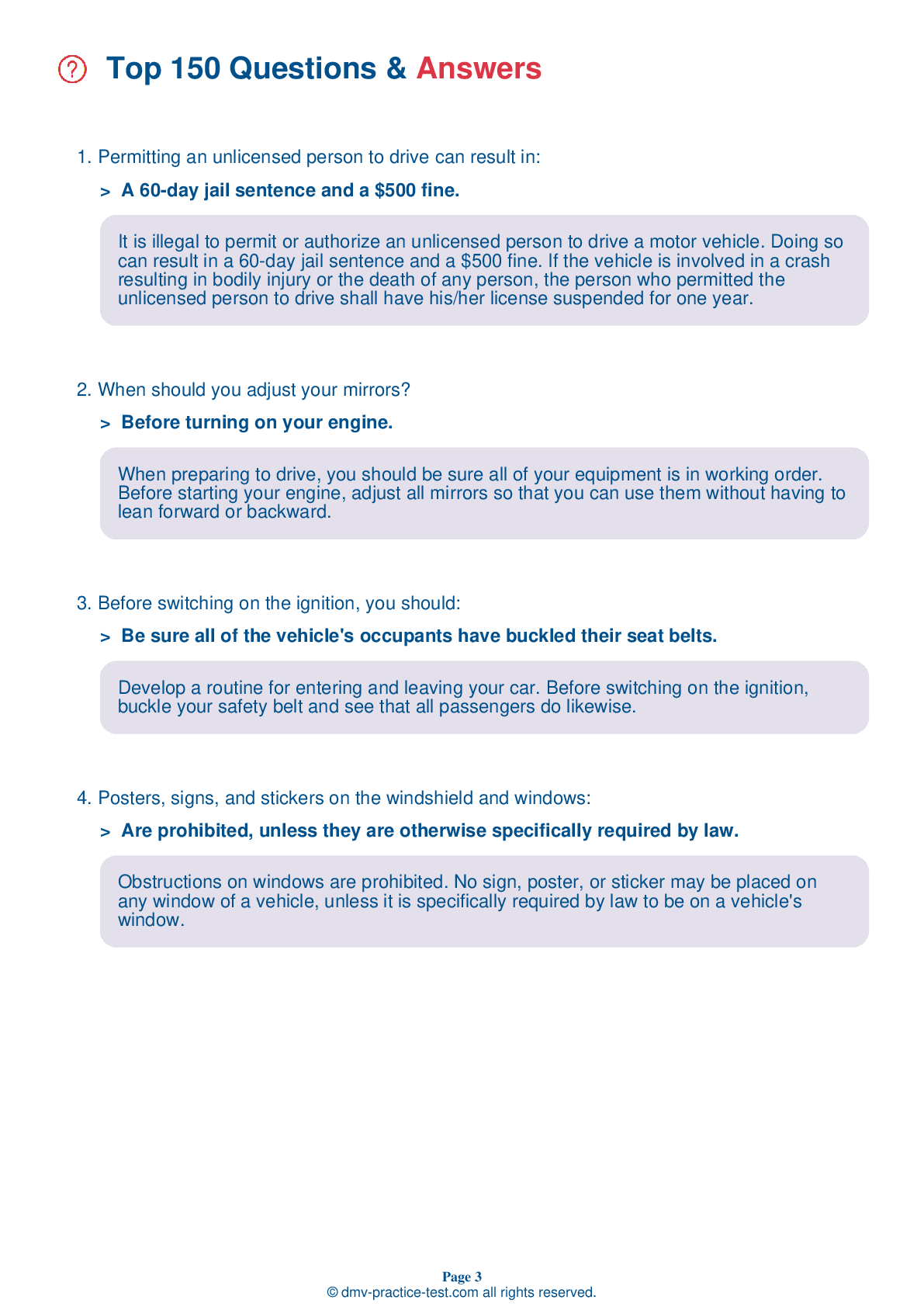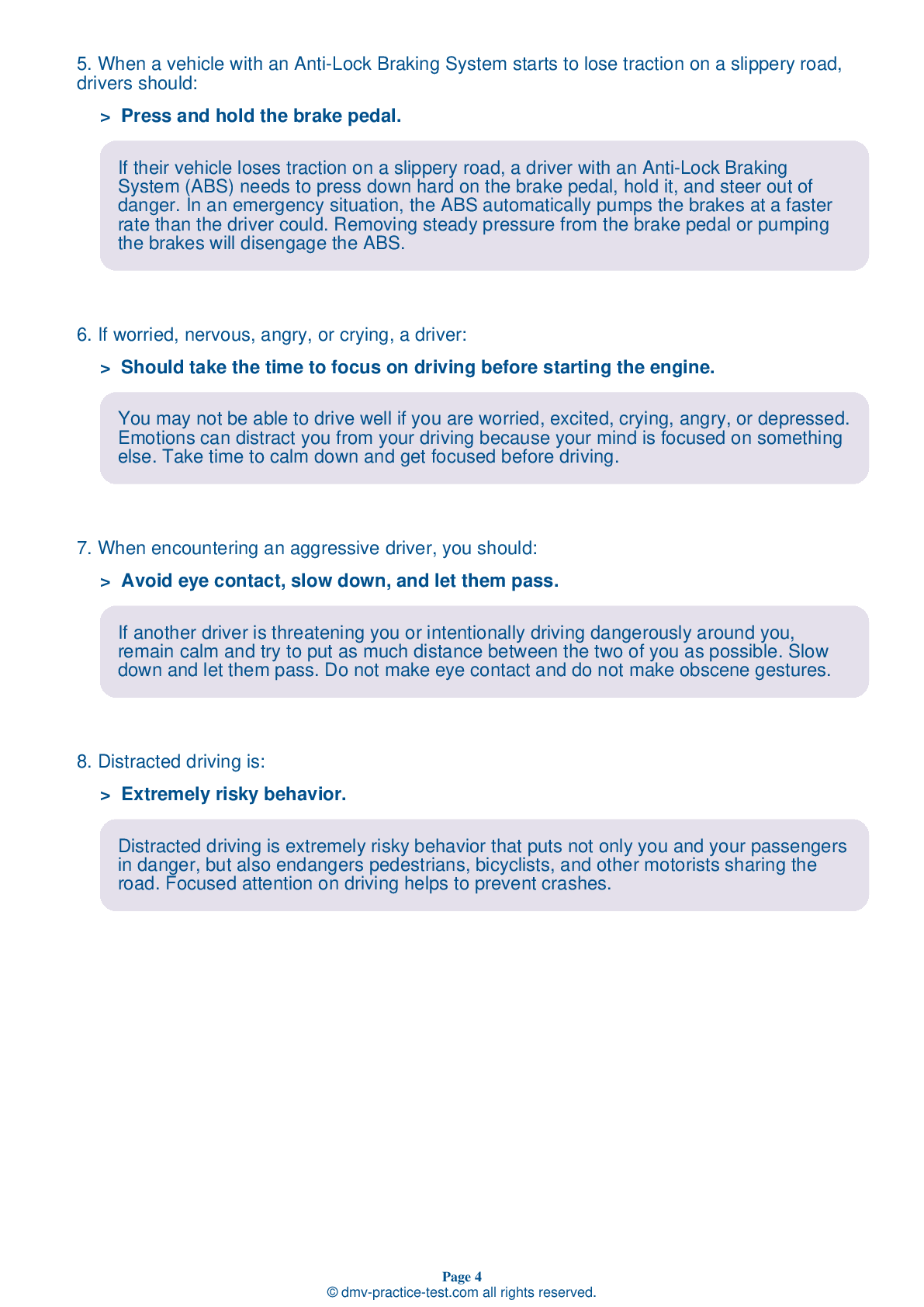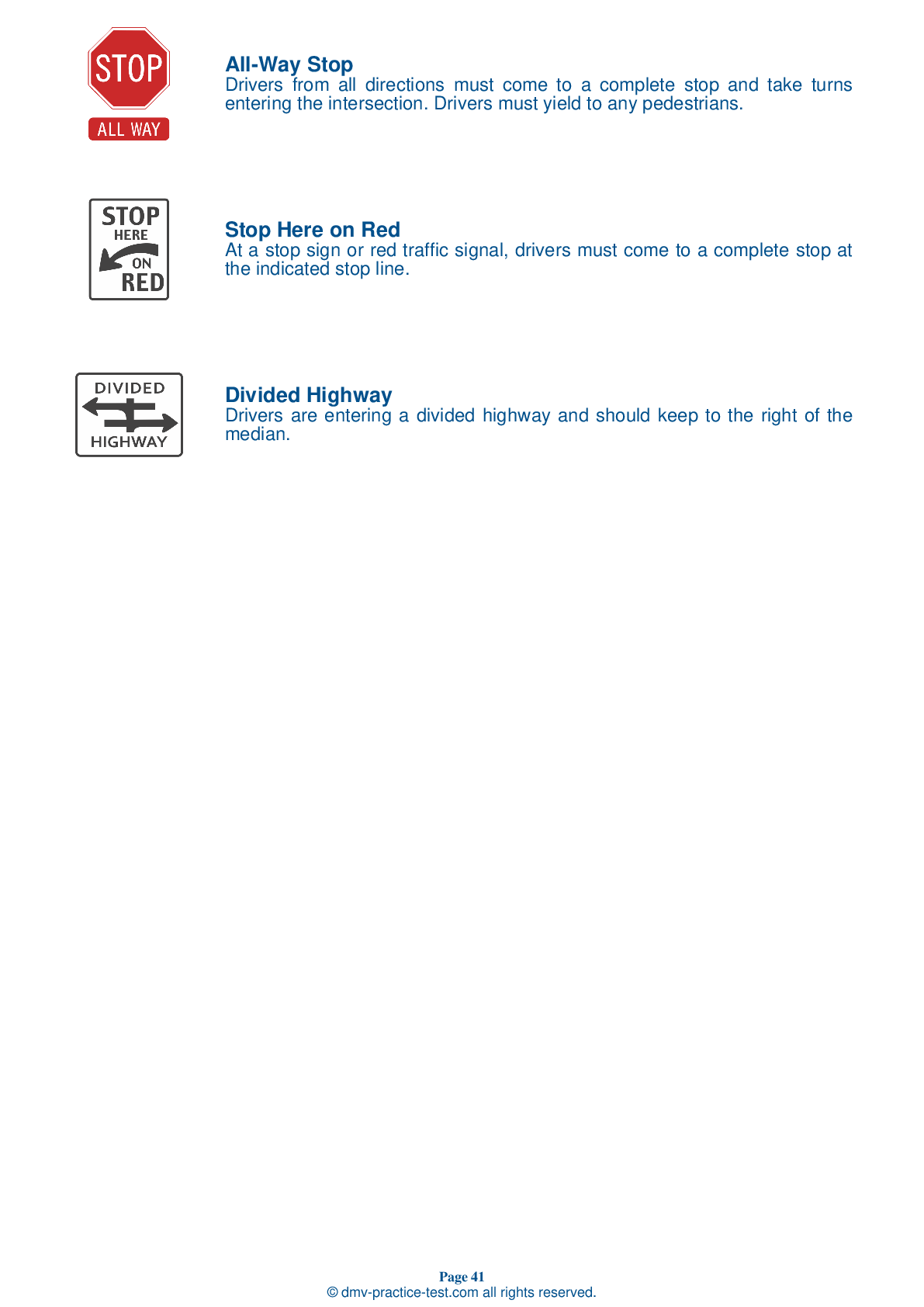FREE Florida DMV Practice Test #6 Page 3 of 7
This set of DMV practise tests for the Florida has been updated for January 2025. It includes questions based on the most important traffic signs and laws for 2025 from the Florida Driver Handbook. To study for the DMV driving permit test and driver's licence exam, use actual questions that are very similar (often identical!) to the DMV driving permit test and driver's licence exam.
Each question on the practise exam has a tip and explanation to help you recall the ideas. Questions about traffic rules, traffic signs, and driving statutes, as well as information from the Driver Handbook, will be included in the written portion of the official DMV test.
You must properly answer 40 of the 50 questions to receive the required passing mark. To help you prepare for your Florida instruction permit or driver's licence, take our DMV practise test.
The DMV exam is offered in a variety of languages.
Using any kind of testing assistance will result in an automatic fail, and the DMV may take additional action against your driver's licence, so stay away from it.
15 . If you are stopped by a police officer, you should:
If you are stopped by the police, keep your hands on the wheel and ask any passengers to keep their hands in view as well. You should remain in the vehicle unless the police officer asks you to get out. Wait until the officer asks you to retrieve your driver license, registration, and insurance cards.
16 . You come to an intersection displaying a flashing red light. You should:
A flashing red traffic light has the same meaning as a stop sign. You must stop, yield the right-of-way, and go once it is safe.
17 . At an intersection with a yield sign, you should:
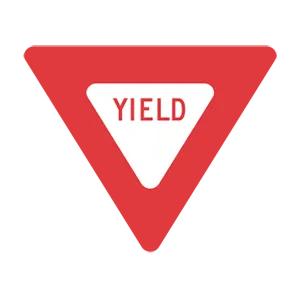
A yield sign means that you must slow down and yield the right-of-way to traffic in the intersection or roadway you are entering.
18 . Signaling your intentions before turning, changing lanes, or driving away from a curb:
When changing lanes or turning, signal your intentions well in advance. The law requires that you signal for at least 100 feet before you move your vehicle to the right or left. Before pulling away from a curb, always signal to inform passing drivers of your intentions.
19 . A seat belt should be adjusted so that it:
Lap belts should fit snugly across your hip bones and the lower part of your abdomen. Shoulder belts should sit comfortably so that you can insert your fist between the belt and your chest.
20 . This sign means:
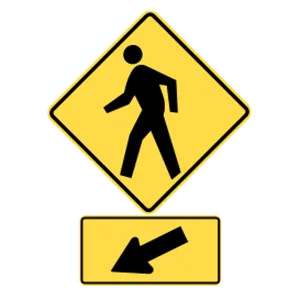
This sign indicates the presence of a pedestrian crossing. Drivers should be cautious when driving where pedestrians may be present.
21 . You are waiting in the intersection to complete a left turn. You should:
You must always signal before turning or changing lanes. You should keep your wheels straight while waiting to make a left turn. If another vehicle hits you from behind, this ensures that you will not be pushed into oncoming traffic.
See the exact questions that will be on the 2025 Florida DMV exam.
99.2% of people who use the cheat sheet pass the FIRST TIME
LT gives us an insight on how the cheat sheet provided her with all the study questions she needed before taking her test.
Joe initially studied with the handbook and failed his test, he eventually found us online, studied and pass his test the first time around.
